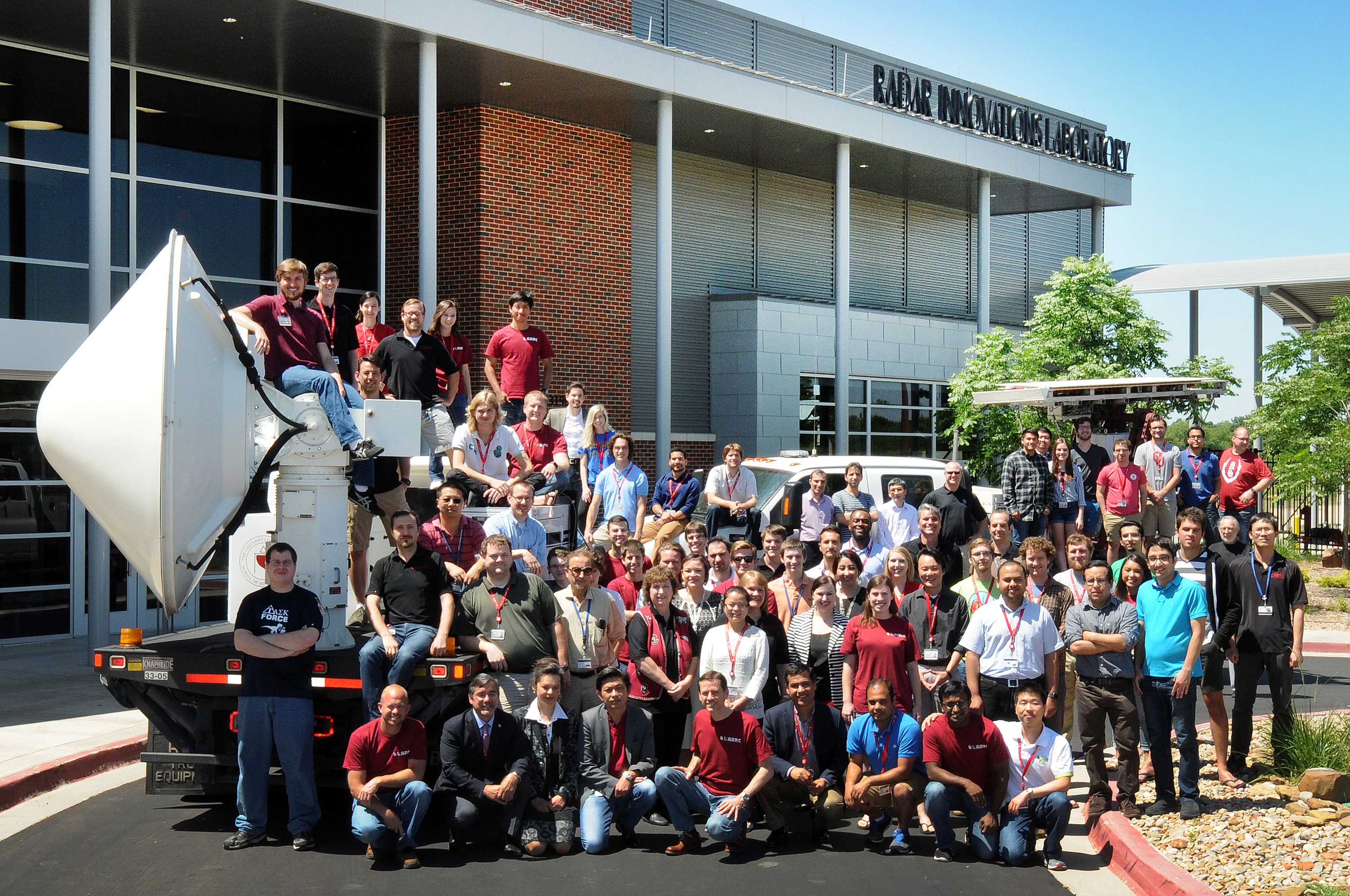OU's radar team is providing a mobile radar system to the U.S. Navy to increase public safety outcomes.
NORMAN—The University of Oklahoma Advanced Radar Research Center is developing an all-digital polarimetric phased array mobile radar testbed with a $5.4 million grant from the U.S. Department of Defense, Office of Naval Research, to address significant near-term obstacles and fulfill many operational missions. The ARRC team is providing a mobile radar testbed that can demonstrate multiple radar modes that increase public safety outcomes, such as weather monitoring and air traffic surveillance and control.
“The University of Oklahoma is the only university developing a system like this one,” said Mark Yeary, OU ARRC team leader and professor of electrical and computer engineering, OU Gallogly College of Engineering. “The ARRC has been successful in attracting the attention of the U.S. Navy and other agencies by building a team of experts that includes both meteorologists and engineers.”
Yeary and ARRC team members Robert Palmer, Caleb Fulton, Hjalti Sigmarsson, Jorge Salazar Cerrano and Nathan Goodman are working with Redmond Kelley, Matt McCord and John Meier, ARRC engineers on the project. The team is responsible for all aspects of the project, including electrical and mechanical design, mechanical assembly, thermal designs, data and processing control, a chiller system, truck with factory integrated generator, array positioner, enclosure and truck modifications.
“The all-digital radar can do what most radars cannot do, which is why the U.S. Navy is extremely interested in the capabilities of this mobile radar testbed. We are fully engaged in the research and development the U.S. Navy is doing and are addressing their needs with this project,” said Caleb Fulton, professor of electrical and computer engineering, Gallogly College of Engineering.
The funding from the U.S. Navy was made possible by foundational work on the so-called Horus all-digital polarimetric phased array radar done in collaboration with NOAA’s National Severe Storms Laboratory for the weather applications. The new system will build upon this work with NOAA and is defined by its flexibility and the software is easily reconfigured to address the challenges the U.S. Navy will face in the future.
This is the second grant the ARRC team has received from the ONR this year for developing new technologies that will advance the U.S. Navy’s mission. For more information, contact Yeary at yeary@ou.edu or visit the ARRC website at https://arrc.ou.edu.

